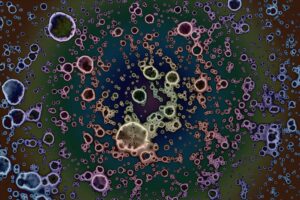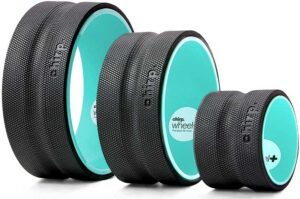Last Updated on 2 years ago by Nicky Johnson
SARMs, selective androgen receptor modulators, are anabolic steroids attached to androgen receptors. Some brands market them as dietary supplements. Before consuming these drugs, do your research.
They are anabolic steroids.
Blog Contents
Selective androgen receptor modulators (SARMs) are anabolic steroids that stimulate androgenic receptors in muscle tissue. They are less harmful to non-skeletal muscle tissues. Ostarine is a popular muscle enhancer. Other SARMs include LGD-4033, mandarine, and aldosterone.
The Body Building community always looks for an advantage, and a little edge never hurts. Not all edge-seeking practices are healthy or legal. Bodybuilders have turned to SARMs for their steroid addiction, and the effects of long-term use can be disastrous. There are now various legal and safe options for anabolic steroids.
They bind to androgen receptors.
SARMs are a class of molecules that engage the ligand-binding domain of the androgen receptor (AR). They range from partial to full agonists, but most are only agonists, and their effects are less potent. SARMs cycle can potentially treat various conditions, and their recreational use may be a safe way to gain muscle mass.
SARMs induce binding to androgen response elements. They also bind to known cofactor motifs of the FOXA1 and HOXB13 genes. This binding to these cofactors causes androgen virilization in women. Therefore, the recreational use of SARMs is a growing concern among many individuals. Recreational users should follow the FDA’s directions regardless of their effects to avoid potentially harmful consequences.
They have potent anabolic effects.
While the current knowledge about selective androgen receptor modulators is limited, the potential for clinical use is promising. TEI-SARM2 has demonstrated particular anabolic effects in muscle tissue, including the heart, liver, and skeletal muscle. Moreover, its tissue specificity made it a promising drug candidate for muscle wasting diseases. TEI-SARM2 exerted its anabolic effects on skeletal muscle via the AR in myofibres and other androgen target cells. This is promising for treating muscle disorders, which may be challenging to treat with traditional methods.
R1881 is a selectable androgen receptor modulator that induces binding to the androgen response elements, essential for regulating the body’s aging process. The compound can enhance muscle growth by binding to a cofactor motif found in FOXA1 and HOXB13. It was observed by incubating the cells in different concentrations of these compounds for 24 hours.
Athletes abuse them
SARMs (Selective Androgen Receptor Modulator) abuse is a rising trend, with increasing numbers of professional and recreational athletes abusing the drug. Unfortunately, as with any other performance-enhancing medication, diagnosing abuse without proper lab tests is challenging, and a growing volume of social media content promoting SARM use makes diagnosis difficult. Further, users may be misled into believing that SARMs are safe and not to disclose their usage to health care providers. Additionally, athletes may be reluctant to discontinue using SARMs when not experiencing the desired performance benefits.
Athletes abuse SARMs for different reasons. The substance has limited androgenic effects and is highly anabolic. It also has a high affinity for the androgen receptor and promotes fatty acid burning, ss-oxidation, and energy uncoupling. The World Anti-Doping Agency has banned SARMs as an anabolic agent.
Bodybuilders use them
SARMs are a relatively new class of anabolic compounds that mimic the anabolic effects of anabolic steroids without side effects. While some bodybuilders prefer SARMs over anabolic steroids, they are not without their drawbacks. T
Selective Androgen Receptor Modular (SARM) drugs selectively stimulate androgen receptors in muscle cells, thereby increasing anabolic cellular activity. While anabolic steroids are widely used in bodybuilding and sport, SARMs are controversial and often unapproved by the FDA. They have no business being sold as dietary supplements and can even be harmful if taken in high doses.
They have been studied in the treatment of breast cancer.
SARMs, or selective androgen receptor modulators, are small molecule drugs that can act as agonists or antagonists to AR in different tissues. In cancer, SARMs results are especially attractive because they can be tailored to treat specific conditions. Many of these compounds have therapeutic potential, and their muscle growth-promoting properties have been studied in treating breast cancer.
SARMs are small molecule drugs that selectively bind to androgen receptors. The anabolic effects of these drugs are achieved without the side effects of anabolic steroids. In breast cancer research, these drugs have been studied as therapeutic agents and in treating cachexia and muscle wasting associated with burns. Because of their safety and efficacy, they are now being investigated for recreational use.







